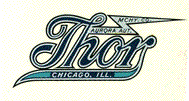
The History of the Thor Motorcycle Company
By Greg Walter
The Aurora Machine and Tool Company started as a machine shop in 1886. It provided forging and machine parts for the then burgeoning bicycle industry. This was a time when many fortunes were to be made in the bicycle industry. Many bike manufacturers set up shop. They bought their castings, forgings and parts like hubs and coaster brakes from Aurora. They would then braze together, assemble, paint, and market their product. I have yet to see a pre-motorcycle parts catalogue – however by 1903 (the year of my earliest literature) they had a large line of parts including 10 different rear hubs, 5 different front hubs, racing hubs, spokes, nipples, handlebars, special spoke washers to be used with wooden rims and a large number of patents were listed.
Enter Indian-
Some time about 1899 Oscar Hedstrom built his first motorcycle. It was a tandem motorcycle used to pace bicycle races. The front person steered; the back person ran the motor and made all necessary adjustments to keep it running (hopefully at the right speed!). No one is sure where that first motor came from. Many have said it was very similar to the French made De Dion motor. Hedstrom had no foundry to work from so it is probable that the castings were provided by some unknown machine shop making their own version of a De Dion or another possibility was that Hedstrom made the pattern himself and used the foundry at Warwick Motorcycle in Connecticut. Presumably Hedstrom refined the design over the original De Dion motor because his machine was notably superior to anything else available. In 1901 he joined forces with George Hendee and formed the Indian Moto Cycle Company. During that year three prototype machines were built. We know from good documentation that in the fall of 1901 one of these prototype Indians was shipped to the Aurora factory be studied by them. Oscar Hedstrom went along to render technical assistance. Why Aurora? Apparently they had been providing Hendee with castings for his Silver King and Silver Queen bicycles.
After several months’ work, the Aurora Company produced a new motor of Hendee’s design. These motors differed from the prototype most notably in the use of three cylinder studs instead of the four (ala De Dion). Also some ribs were added to strengthen the engine case. Aurora struck a bargain with the fledgling Indian Company. Aurora would build these engines for Indian but would be free to sell additional motors to other companies providing that a royalty was paid. Also it was stipulated that Aurora would not build motorcycles and compete with Indian. I have yet to see the original contract so the exact wording of the agreement is still unknown to me.
There were 137 Indians produced in 1902. All of the motors were built by Aurora, and as Indian had no foundry and limited production capabilities probably most of the forgings, castings and machined parts. George Hendee was previously in the bicycle manufacturing business and so it is assumed that Indian brazed together their own frames, manufactured their own fenders and tanks did their own painting and assembly. It is known that Indian had patents for the Chain Adjuster, “Muffler For Internal Combustion Engines”, “Valve For Internal Combustion Engines”, Controlling Mechanism For Internal Combustion Engines”, Carburetor, and “Fuel or other reservoir (?)”. So presumably Indian used their own rear hubs, not Aurora’s hubs. However, early Indian literature says they used a New Departure hub. It is unknown if Aurora made or sold any motors in 1902 other than the 137 to Indian. It is possible that that was all they could produce, as a reference found in the Indian archives mentions how shipments were often unreliable and sporadic.
In 1903 Aurora founded the Thor Moto Cycle and Bicycle Company. Or at least they produced a catalogue showing Thor Moto Cycle parts and components. In their catalogue every part needed to produce a motorcycle was listed for sale. A picture carefully worded as a “motorcycle assembled from Thor components” was shown. Interesting that they might have their own tank decal if they were only selling components for other companies! No frame was offered for sale but all of the forgings could be purchased to assemble your own. In 1903 trade magazine ads were seen of companies that would sell you Thor motorcycles built from components. It is here that we mark the beginning of the Thor Motorcycle Company. At about this time at least half a dozen other companies sprang up all producing similar machines built from similar components all looking near identical to the 1902 Indian and 1903 Thor.
What was the difference between a Thor, a Thor clone and an Indian? Well, all the forgings may have been the same however the frames were all built using different jigs and possibly different dimensions. It is near impossible for us to sort this out now because some of the dozen or so 1902 Indians that we know about have some wrong components. The surviving 1903-05 Thors are even more dubious. Some clones have been restored to be Thors. Some Thors have Indian component on them. One “early Thor” uses a skip tooth roller chain (versus Indian block chain) has a heavier gauge frame tube, uses a Thor rear hub and both the carb and motor say Thor instead of Indian. Indian would often brag that they did something secret to their motors that made them superior to Thors but most experts doubt this. Another difference between the two machines can be found in the right-sided spark advance. The Indian had a link arrangement coming out of the handlebar, the Thor had a sort of rack and gear arrangement at the headstock. Thor also had a kill switch on the engine case that triggered when the spark was completely retarded – Indian motors did not. It is said that in 1905 half the motorcycles seen at a trade show were Thor clones. Included in the list are Thor-bred, Reading Standard, Merkle, Apache, Raycycle, Manson and in years later Sears and Torpedo.
From what we can see Thor did not change their design from 1903-1905. In a 1908 parts book they show a picture of the original 1903 design and call it a 1903-05. They also show a different Model for 1906-07, which uses the same design with numerous changes. The same model was updated in 1908 and sold as a model “7”. This same design was until early 1909.
Indian literature states that they had their own in house foundry in 1906. In 1908 Thor opened there own dealerships advertised completed machines and produced their first real sales literature. Thus officially ending any ties. In addition to the previous model 7 an entire line of new machines with choice of either battery or magneto ignition were now available. Thor offered chain drive or belt drive. One new design was a unique appearing twin with automatic intake valves. The twin had the rear cylinder straight up and the front cylinder angled forward (as Ducatis were later famous for). By all accounts it ran rather well which is interesting in the light that both Indian and Harley had difficulties with automatic intake twins.
Thors changed with the times. In 1911 they offered a free engine clutch for the first time. They continued belt drive for the last year but only on their single cylinder models. Apparently the factory felt that the additional horsepower of the twin produced an unacceptable amount of slippage. Rather than use a more conventional belt-tensioning device, these belt drive Thors used a complex device which instead altered the geometry of the frame to tension the belt. Another addition for 1911 was a change in the intake valve of the twins. A rather unique pull rod was used to pull the intake valve open. One other unique design feature was found in 1911 and that was in the magneto timing. Rather than advance and retard the timing plate on the magneto the ignition timing was changed by moving the magneto idler gear (a feature that thankfully did not survive into 1912).
In 1912 an entirely new single and twin were offered both with rocker arms. The twin was now a more conventional V but unlike Indian’s 42 degrees and Harley’s 45 degrees Thor chose a 50-degree angle. Also offered was an optional two-speed transmission. This transmission was aluminum and it mounted to the side of the rear hub. Apparently of good design the aluminum Thor transmission was sold until 1914 and was even offered as an option on other motorcycle most notably the Henderson four. Perhaps the most exciting change for 1912 was that for the first time Thor was available in White as well as Blue. Apparently Bill Ottaway had used white as the color for all Thor’s racing team. They were very successful so the factory felt that the public would be interested in buying a White Thor. I don’t know how they figured owners would keep them clean looking (the owners manual suggests Ivory soap!).
Not much changed in 1913 however in 1914 the twin was offered as a 1000cc and now a 1,200cc machine. The new bigger twin could also be bought with a Schebler carb if desired. Up until this point all Thors used their own Thor updraft carburetor. Like most other manufacturer Thor added footboard in 1914. Thor still continued its pedal crank rear brake however a pedal and ratcheting device was added that gave a little additional leverage to a marginal braking system.
In 1915 the white color scheme was gone. Everyone else was offering electric lights as an option so Thor mounted an electric headlight and a Splitdorf mag dyno and they had an electric model too. 1915 was a banner year for Indian, Harley, and Excelsior. They each offered a three-speed transmission of conventional design. The best Thor could do was a new designed cast iron two speed that mounted aside the rear hub. While maybe this unit was rugged in design its huge size and weight left much to be desired.
Having carried one from one end of a swap meet field to the other I can attest that it was just too heavy.
Along with the usual singles and twins offered in 1915 was a Short Coupled racer. It was actually a short-coupled version of a 1914 street bike. Given the tremendous competition on the board tracks in 1915 it is doubtful that anyone could have thought this bike to be competitive. More likely a marketing decision on a way to sell some of last years left over inventory.
1916 was for all intents and purposes the last real design change. Thor offered a three-speed transmission and clutch of conventional design. After 1916 there were no changes made to the motor design. Actually some evidence suggests that all motors sold after 1916 were built in 1916. In 1917 a front stand was offered. In 1918 the fender valence was changed, as was the luggage rack. A lug was added to the front down tube of the frame to mount a sidecar. Conjecture is that this was done to appeal to the military market. I have seen no documentation of any number of Thors sold to the US military. However given the number of olive drab parts turn up as well as the proportion of 1918 and later machines that exist in Europe it is probable that some country must have bought purchased a large number of machines.
Thor continued on to produce a line of motorcycle under the parent company of Aurora Independent Machine and Tool. At the same time Aurora continued to market forgings to other companies and to sell Pneumatic and power tools under a different division. There is scarcely a brand of american motorcycle that wasn’t in some way “touched” by Aurora. Reading Standard, Flying Merkle, Raycyle, Indian, Sears have all been mentioned. Cyclone (? – well the fork and frame forgings at least were), Henderson (? – well the 1913-14 models sold a Thor two speed hub as an option), Harley (? – the 1911-14 single speed hubs were of Thor design and manufacture). Another tie in to Harley was in the arena of racing. Thor had a racing division from about 1908 to 1912 and they had a fair amount of success. It was run by William Ottaway. Bill left in 1912 and formed the incredibly successful Harley Davidson racing team, which bought Harley from relative obscurity in 1911 to arguably the American champions in 1916.
By 1918 the Thor Motorcycle Company was fading into obscurity. We know they brought a new model single out in 1918 mostly from left over parts. Enough changes were made that we know that the company was still producing bikes.
In 1919 Thor brought out a new sales catalogue however except for the cover and a change in name the motorcycle was identical. The parent company transferred motorcycle production to the Aurora Pneumatic Tool Company of Chicago Illinois. Which was simply just a different division of the same company. In 1920 the board of directors announced a halt to motorcycle production.
In 1965 an employee of Thor who was a semi-retired janitor sent a letter to the AMCA stating that he hard worked for Thor until 1916 when they stopped motorcycle production and sold everything to a salvage company. Based on this account many books erroneously state that Thor ended production in 1916. Well it is easy to prove that production continued until 1918 because of the changes advertised in their sales brochure. Many of those parts exist today as proof. I don’t know of a complete machine that claims to be later than 1917 and even that one has the wrong motor. I have seen three motors in 1918-20 frames with serial numbers inside the case showing they were built in 1916! Maybe the last motors were built in 1916 who can say? Maybe the last machines were assembled in 1918 and sales were such that they continued to have inventory until 1920? It is hard to know. Thor did continue to produce power tools under the name Thor well into the 50s. A separate division of the Aurora Company known as Hubley Manufacturing produced a line of home appliances such as clothes washers, irons and dishwashers using the Thor brand name. At one time they produced a combination clothes washer – dishwasher which may help explain why they are no longer in business!
After the 50s it gets somewhat fuzzy. Several divisions were being sold off or closed. I am uncertain whom, if anyone owns the rights to the Thor motorcycle name however no division of the parent company is still using the Thor logo.
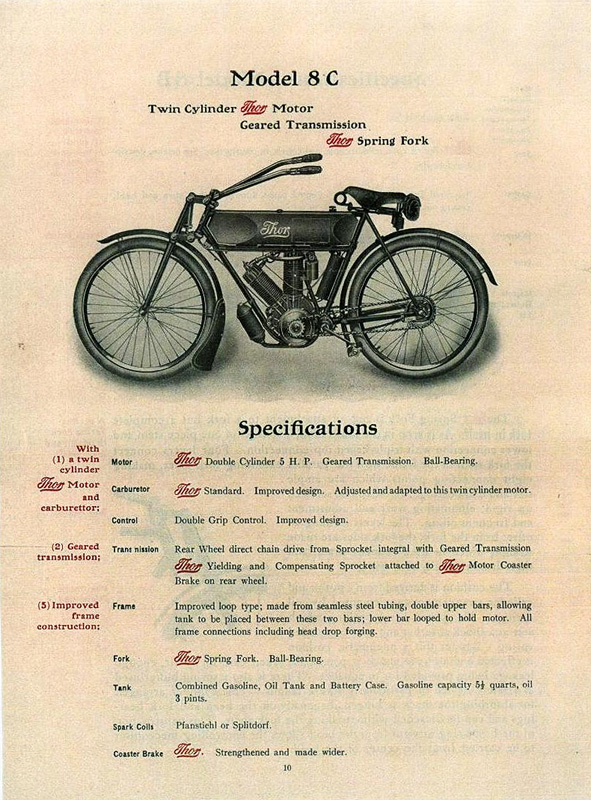
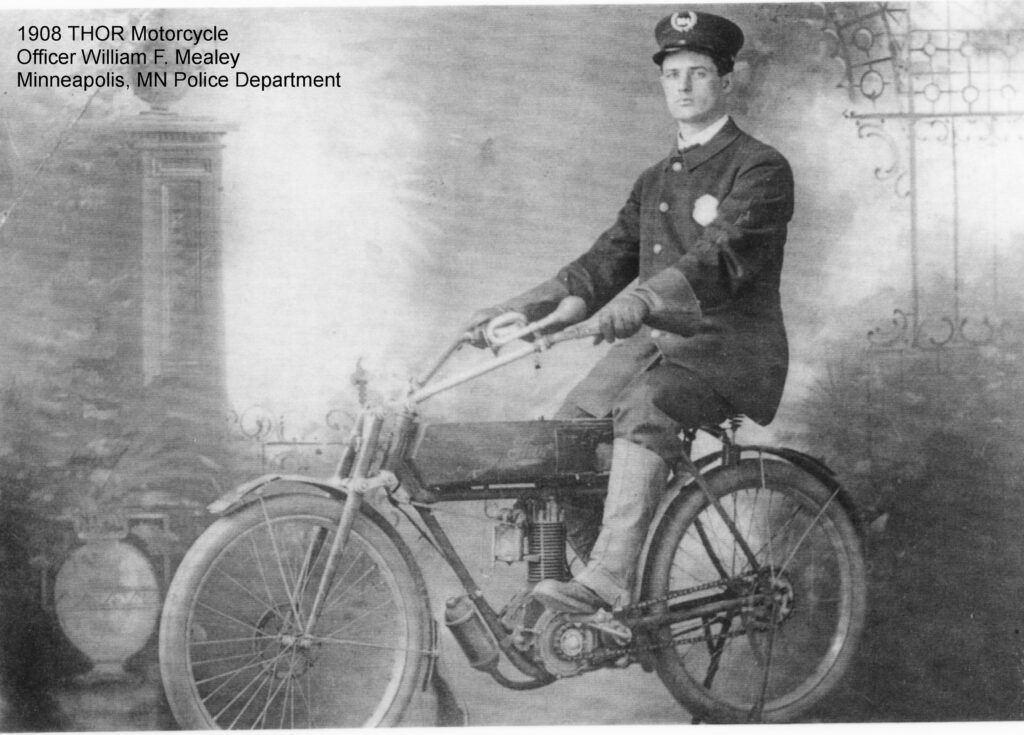
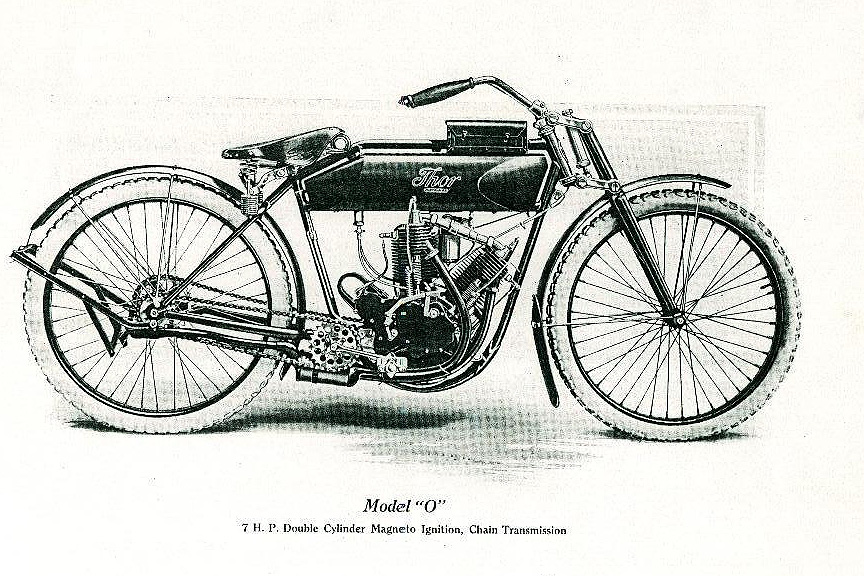
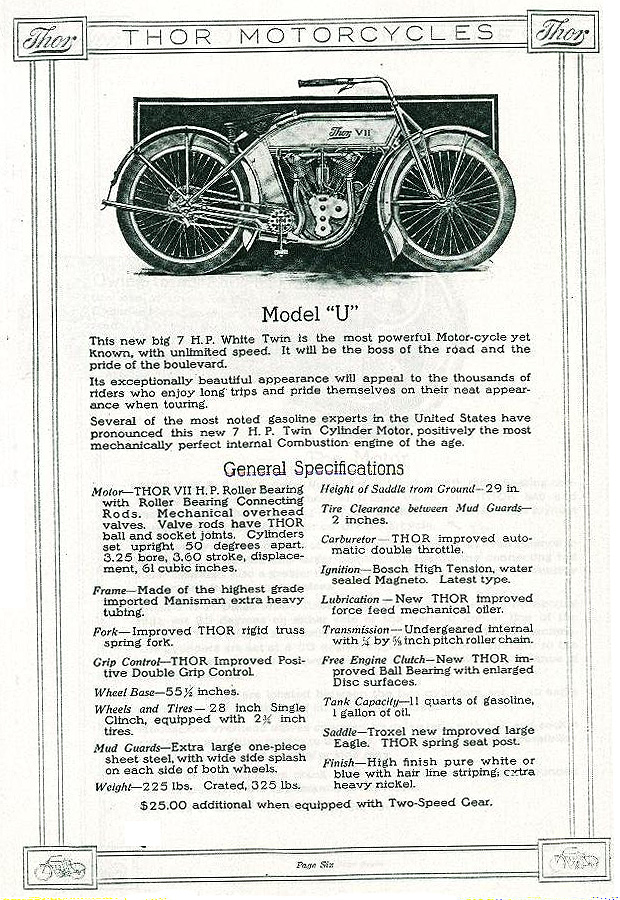
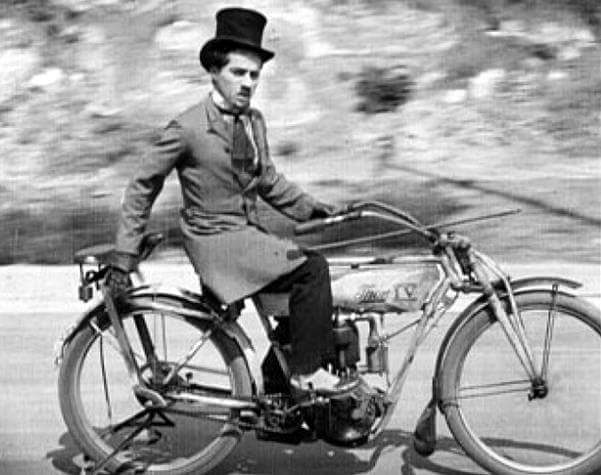
Thank you to Greg Walter, reproduced with his permission.